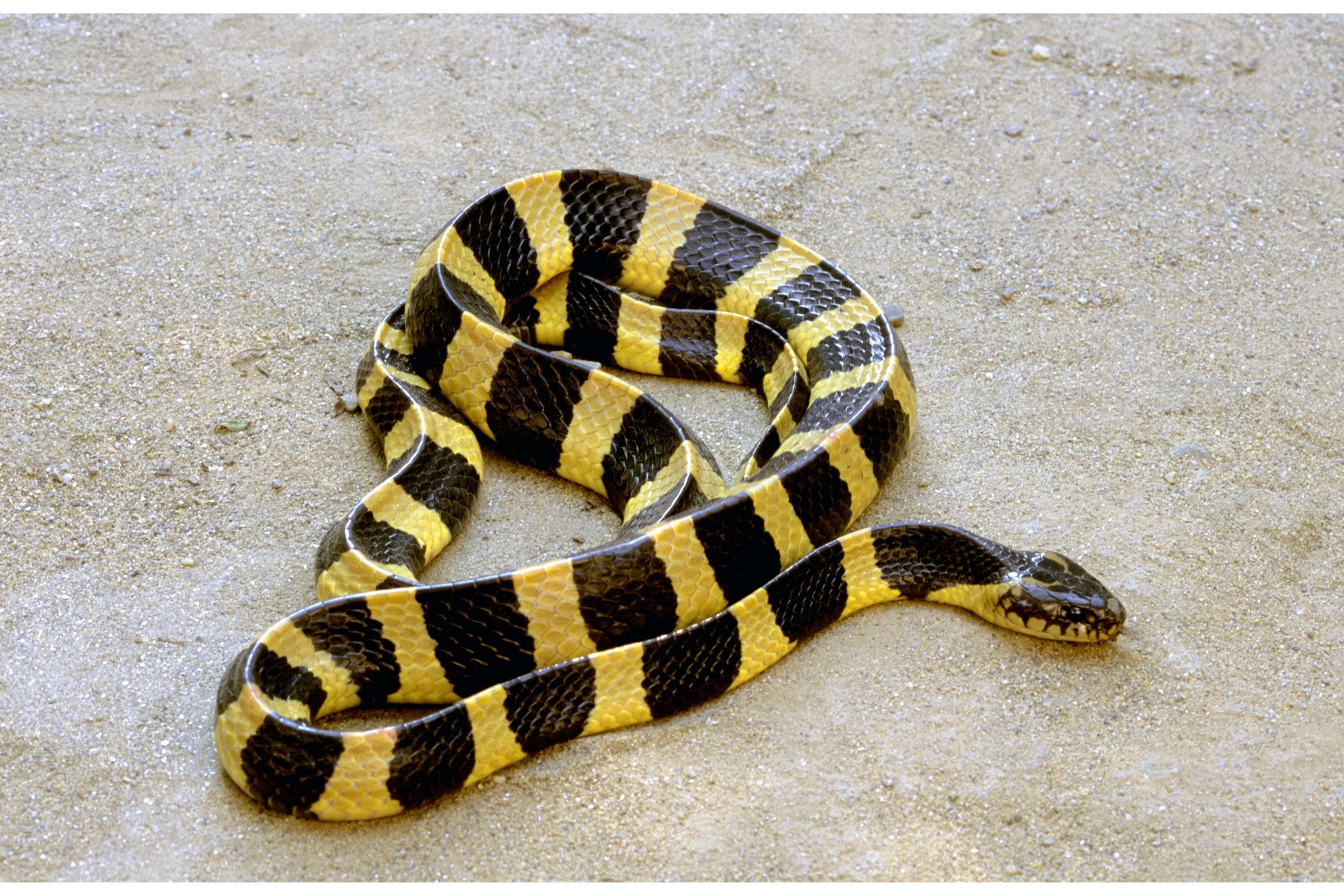Common krait
(Bungarus multicinctus)

Description
The common krait (Bungarus caeruleus), also known as the blue krait, is a species of highly venomous snake of the genus Bungarus native to the Indian subcontinent. It is a member of the "Big Four" species that inflict the most snakebites on humans in India and Bangladesh. The average length of the common krait is 0.9 m (2 ft 11 in), but it can grow to 1.75 m (5 ft 9 in). Males are longer than females, with proportionately longer tails. The head is flat and the neck hardly evident. The body is cylindrical, tapering towards the tail. The tail is short and rounded. The eyes are rather small, with rounded pupils, indistinguishable in life. The head shields are normal, with no loreals; four shields occur along the margin of the lower lip; the third and fourth supraoculars touch the eye. The scales are highly polished, in 15-17 rows; the vertebral row is distinctly enlarged and hexagonal. Ventrals number 185-225 and caudals 37-50, and are entire (intact). Their colouration is generally black or bluish black, with about 40 thin, white crossbars, which may be indistinct or absent anteriorly. Albino specimens can be found, although such cases are extremely rare. The pattern, however, is complete and well defined in the young, which are marked with conspicuous crossbars even anteriorly; in old individuals, the narrow white lines may be found as a series of connected spots, with a prominent spot on the vertebral region. A white preocular spot may be present; the upper lips and belly are white. This common krait is distributed from Sindh to West Bengal, throughout South India, and Sri Lanka, at elevations up to about 1,600 m (5,200 ft). It has also been recorded in Afghanistan, Bangladesh, and Nepal. It lives in a wide variety of habitats, from fields and low scrub jungle to settled areas. It rests in termite mounds, brick piles, rat holes, and even inside houses. It is frequently encountered in water or in proximity to a water source. The common krait feeds primarily on other snakes, including: "blind worms" (snakes of the genus Typhlops), and cannibalizes on other kraits, including the young. It also feeds on small mammals (such as rats, and mice), lizards, and frogs. The young are known to eat arthropods.
Taxonomic tree:







